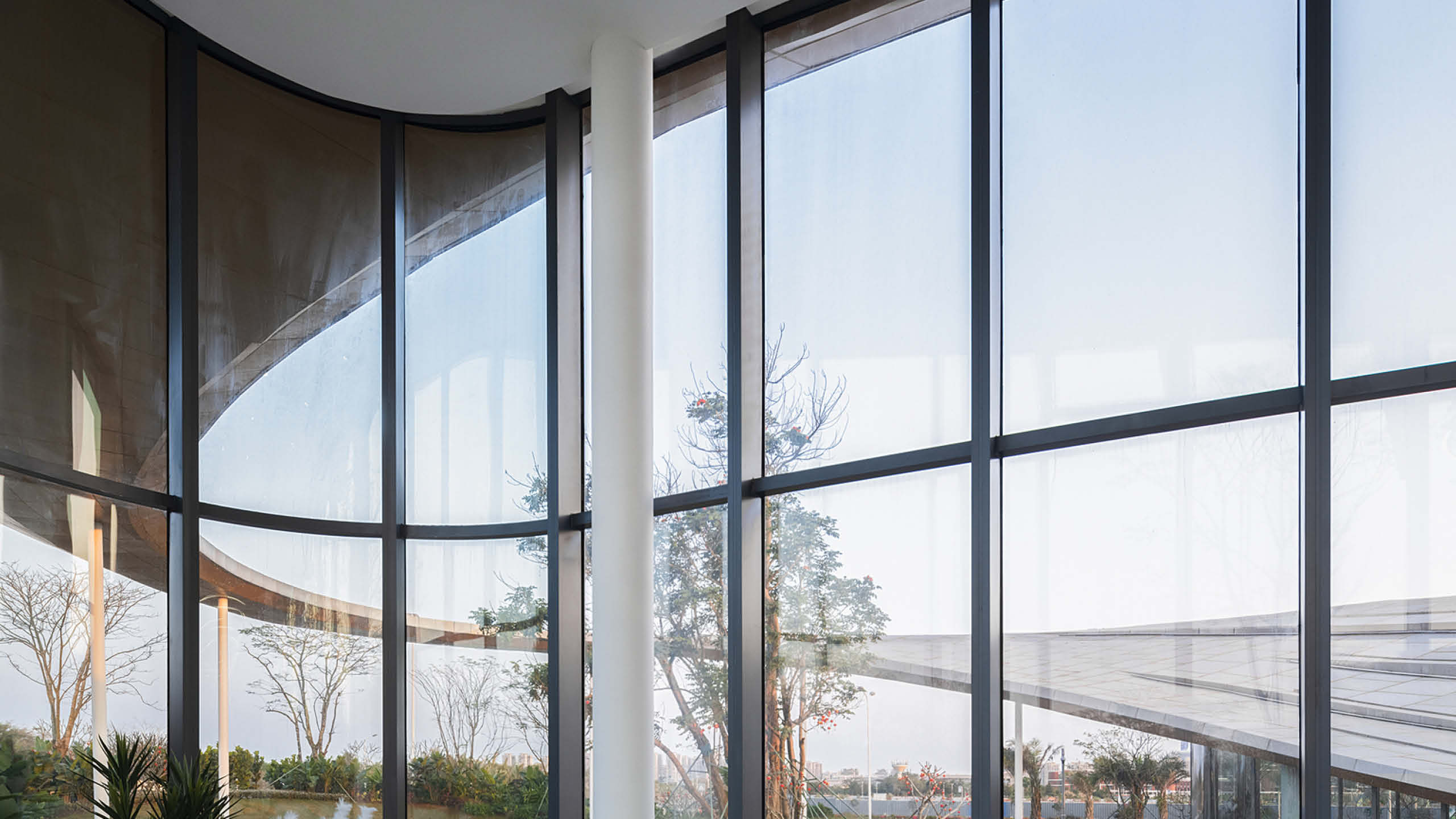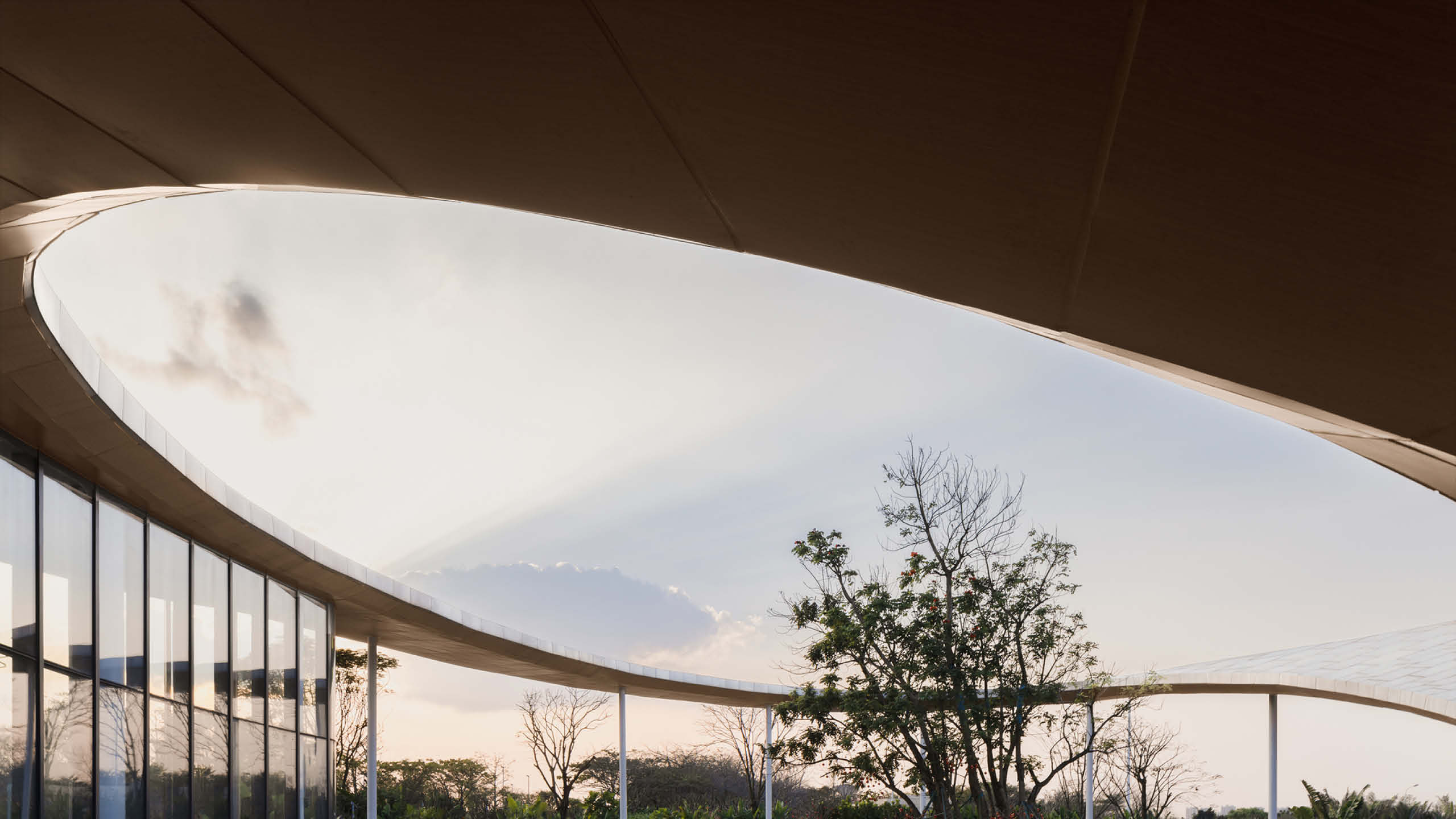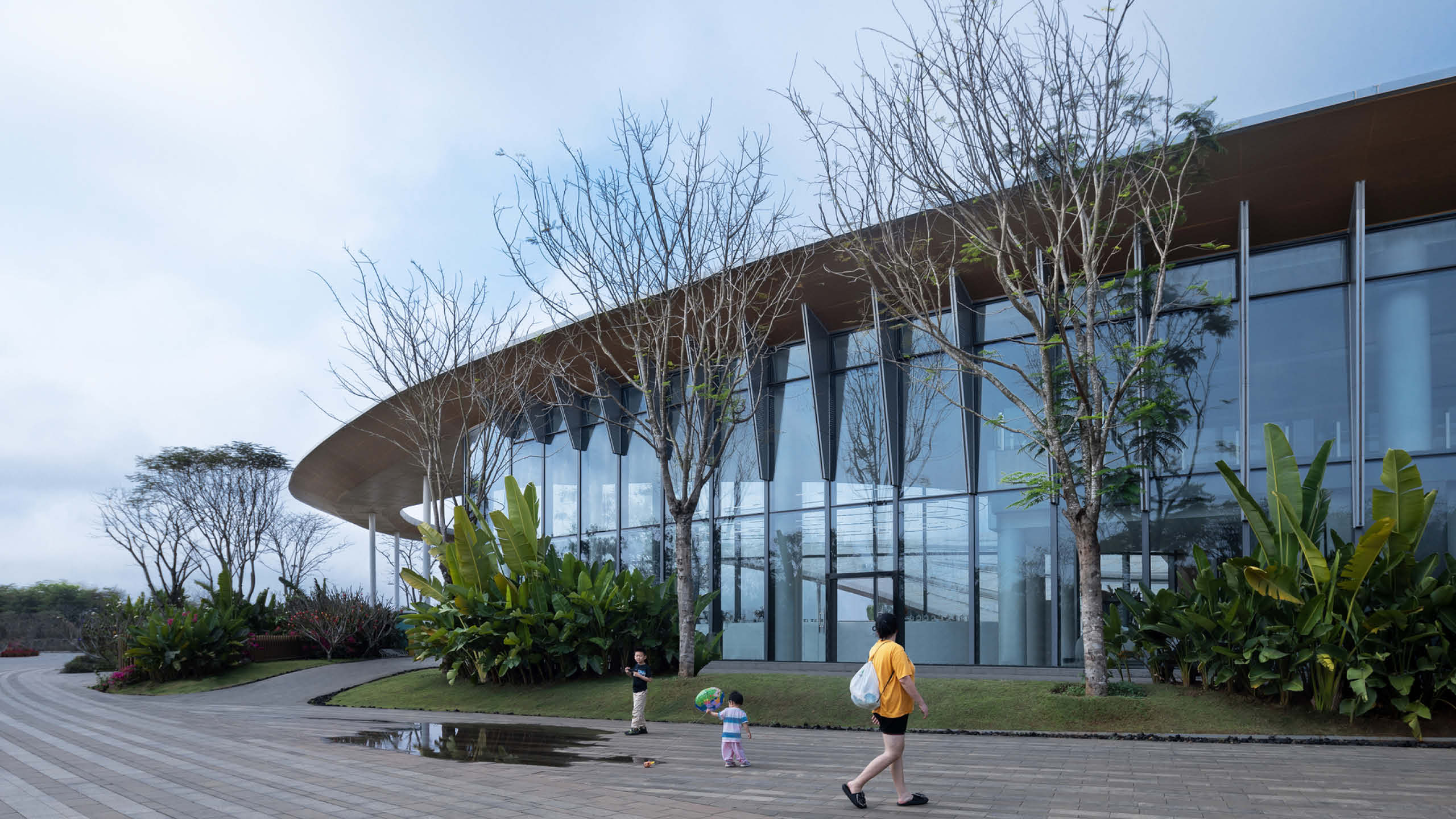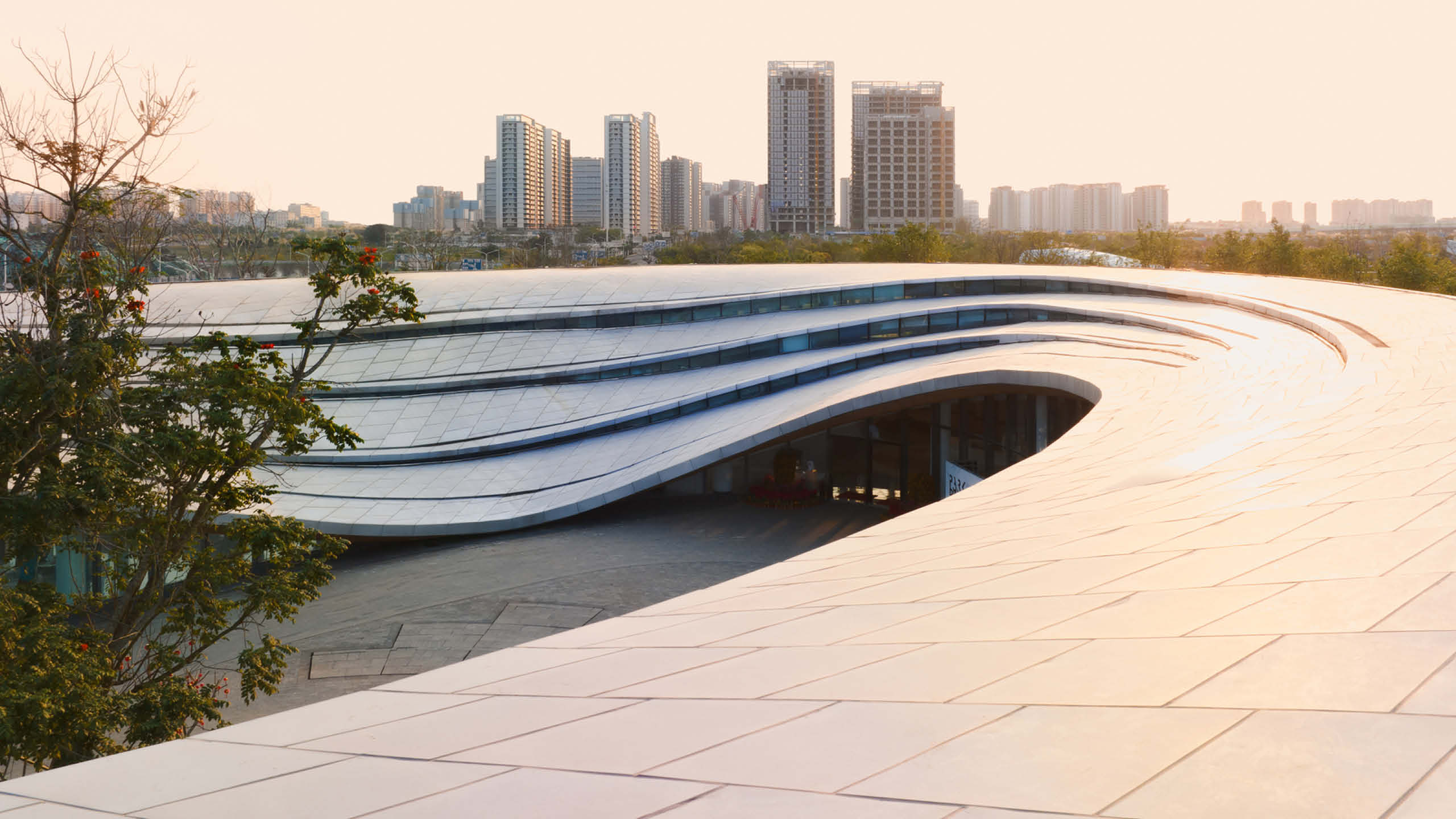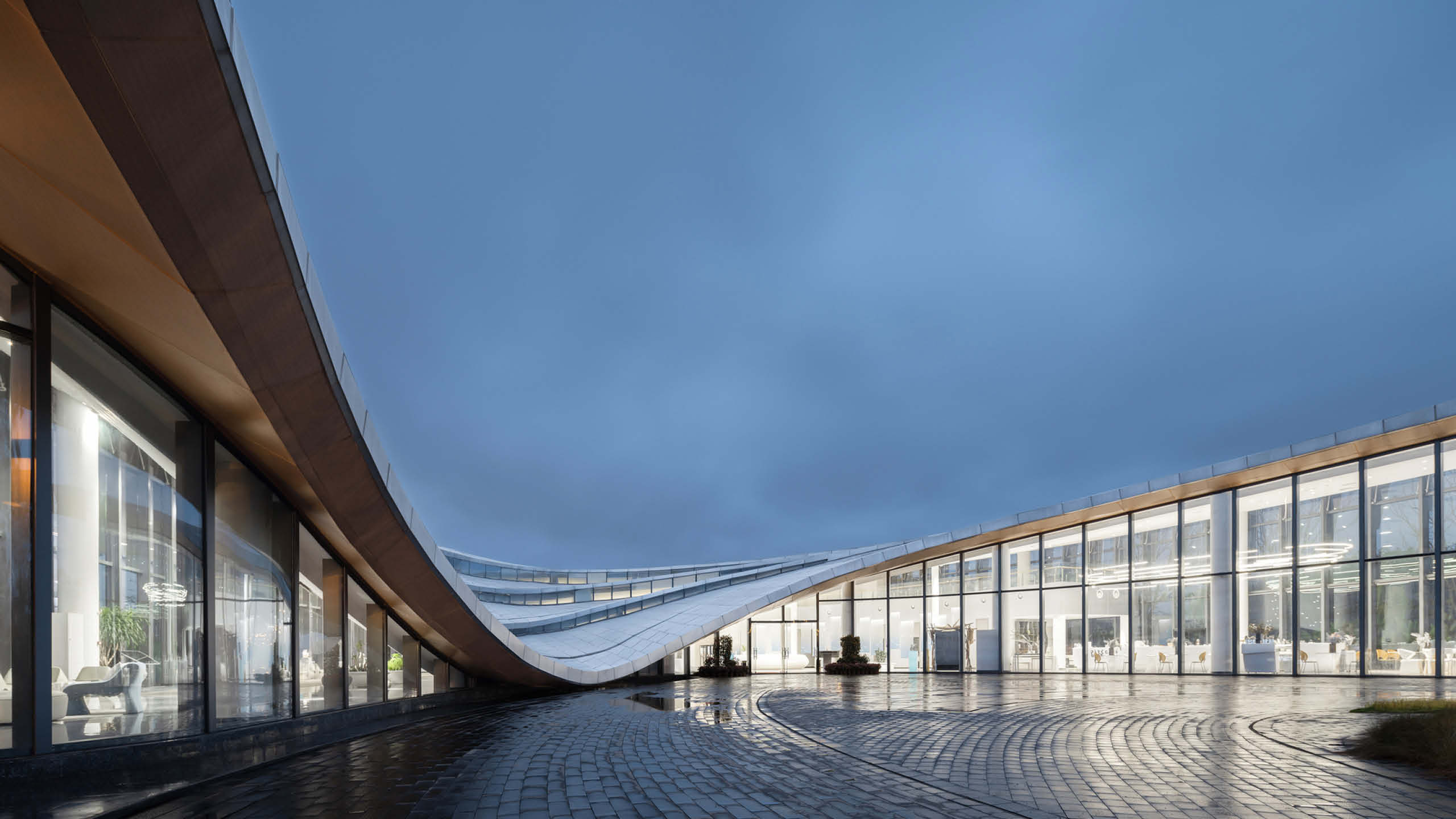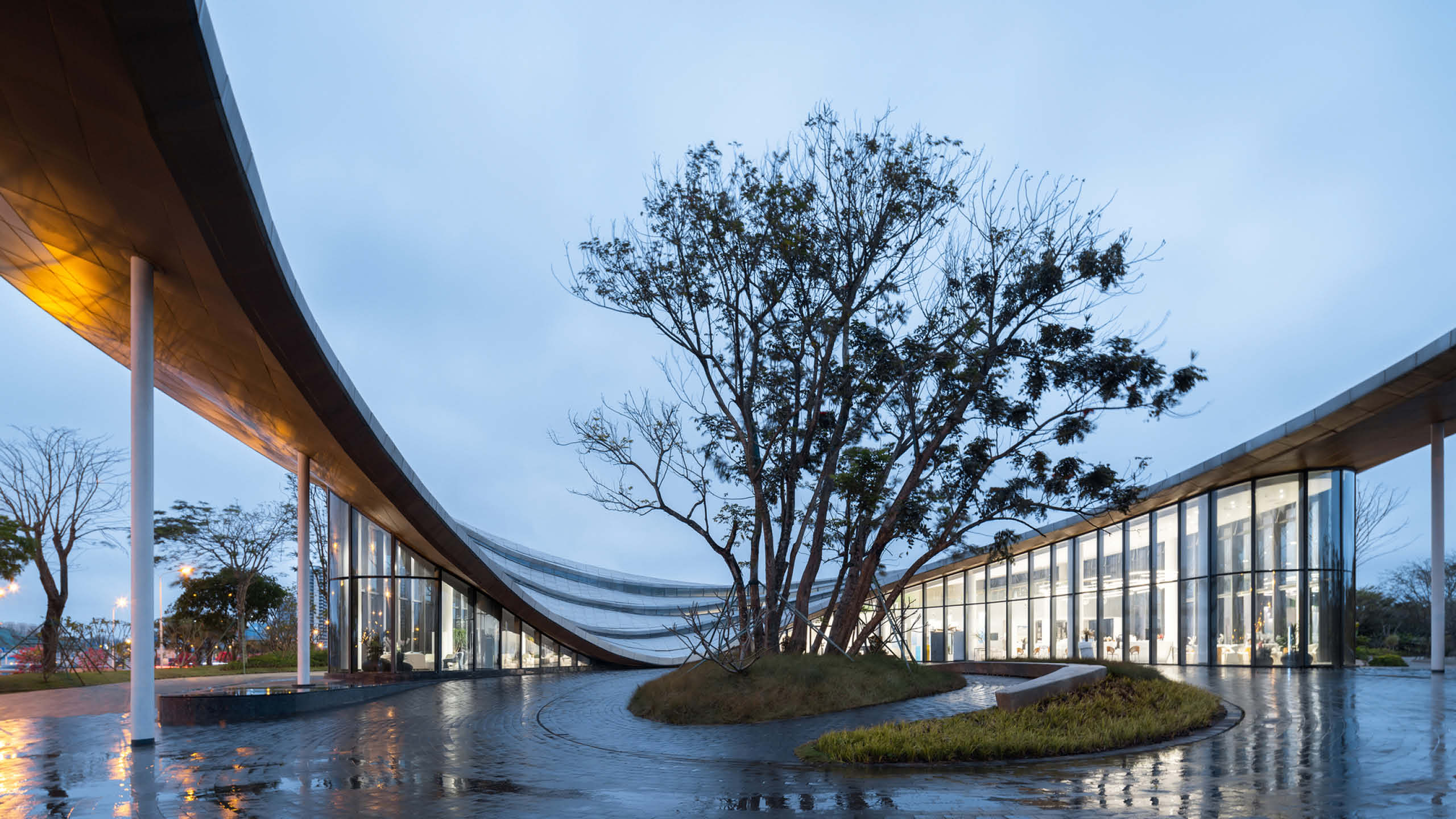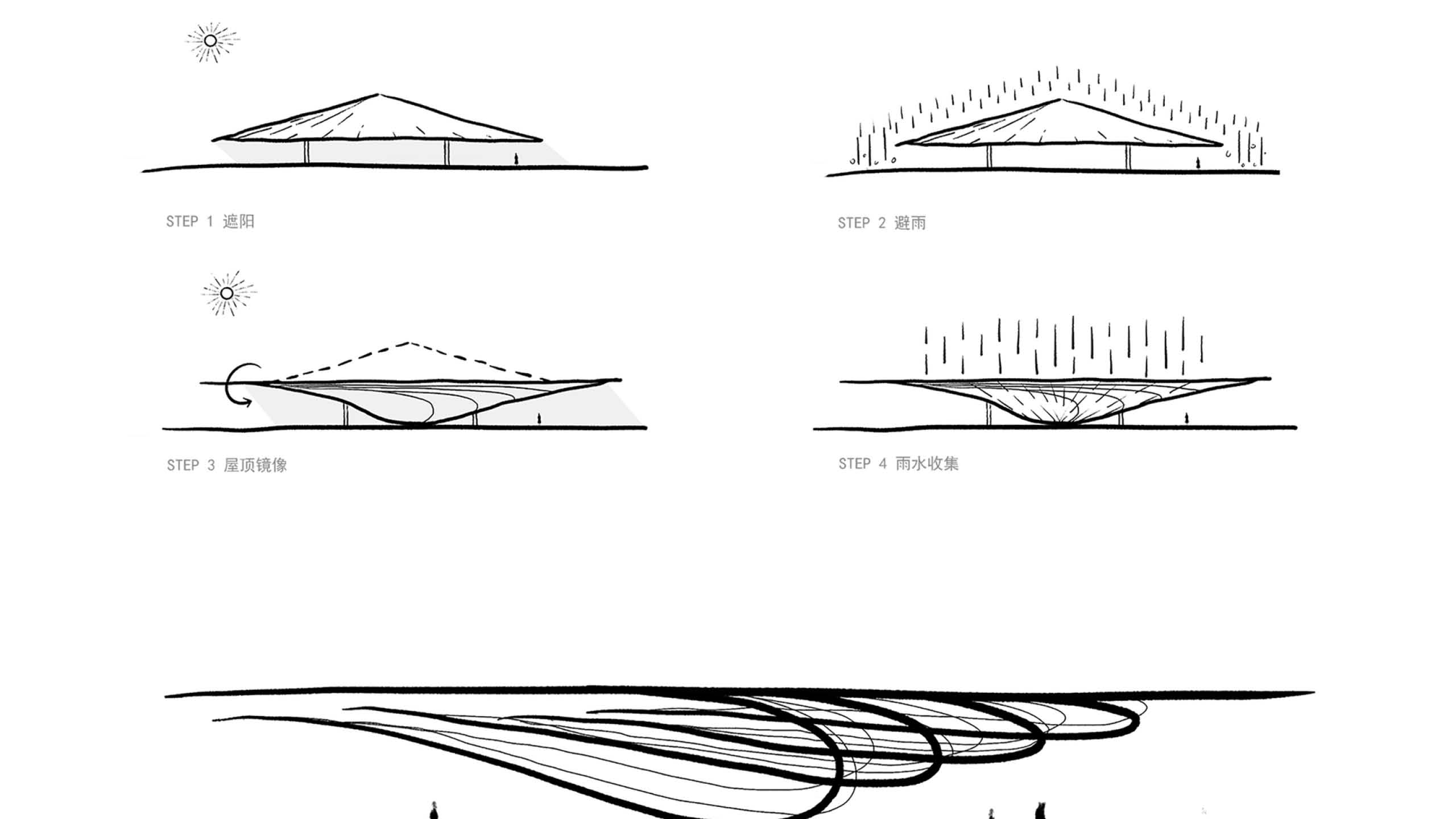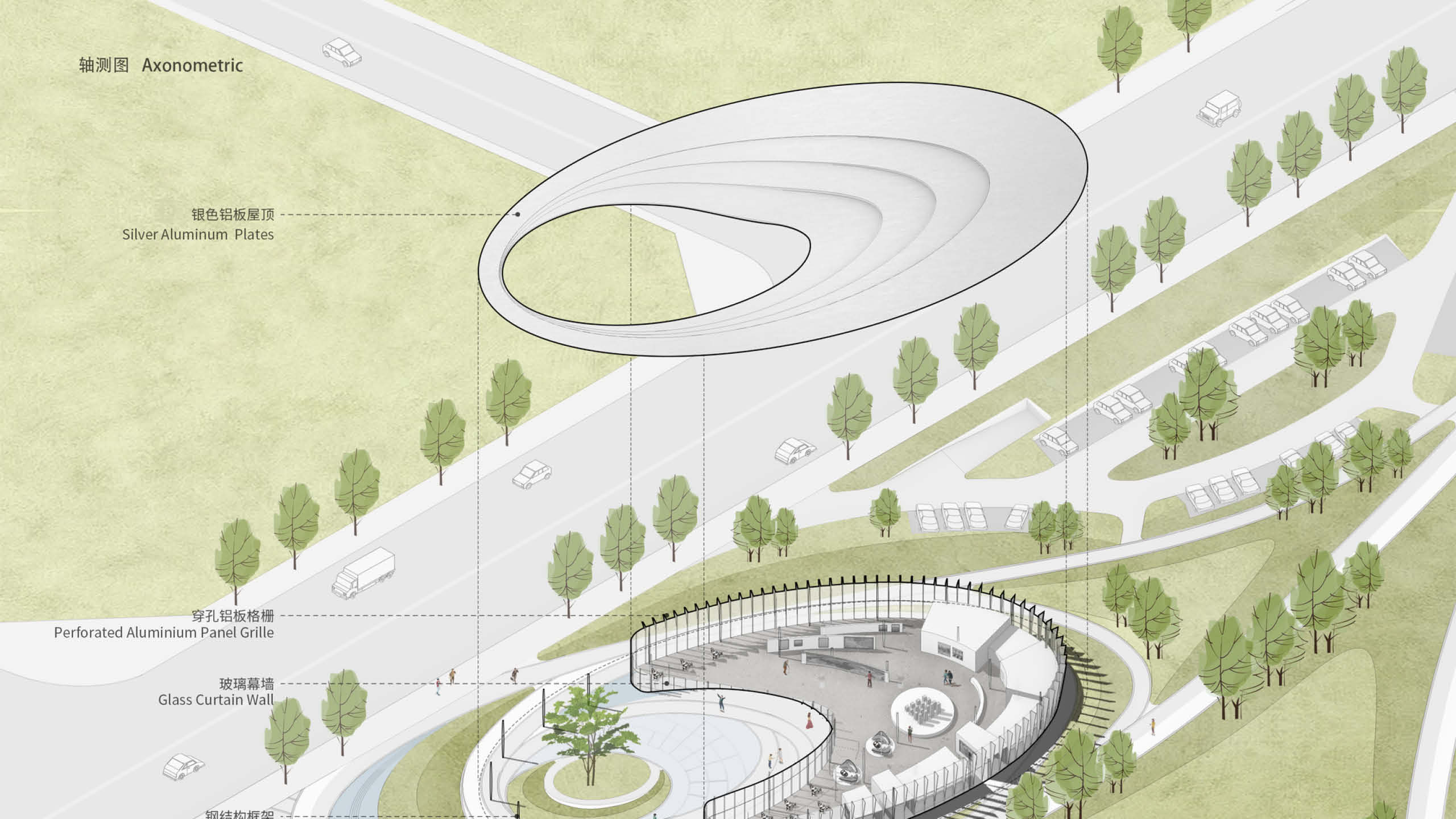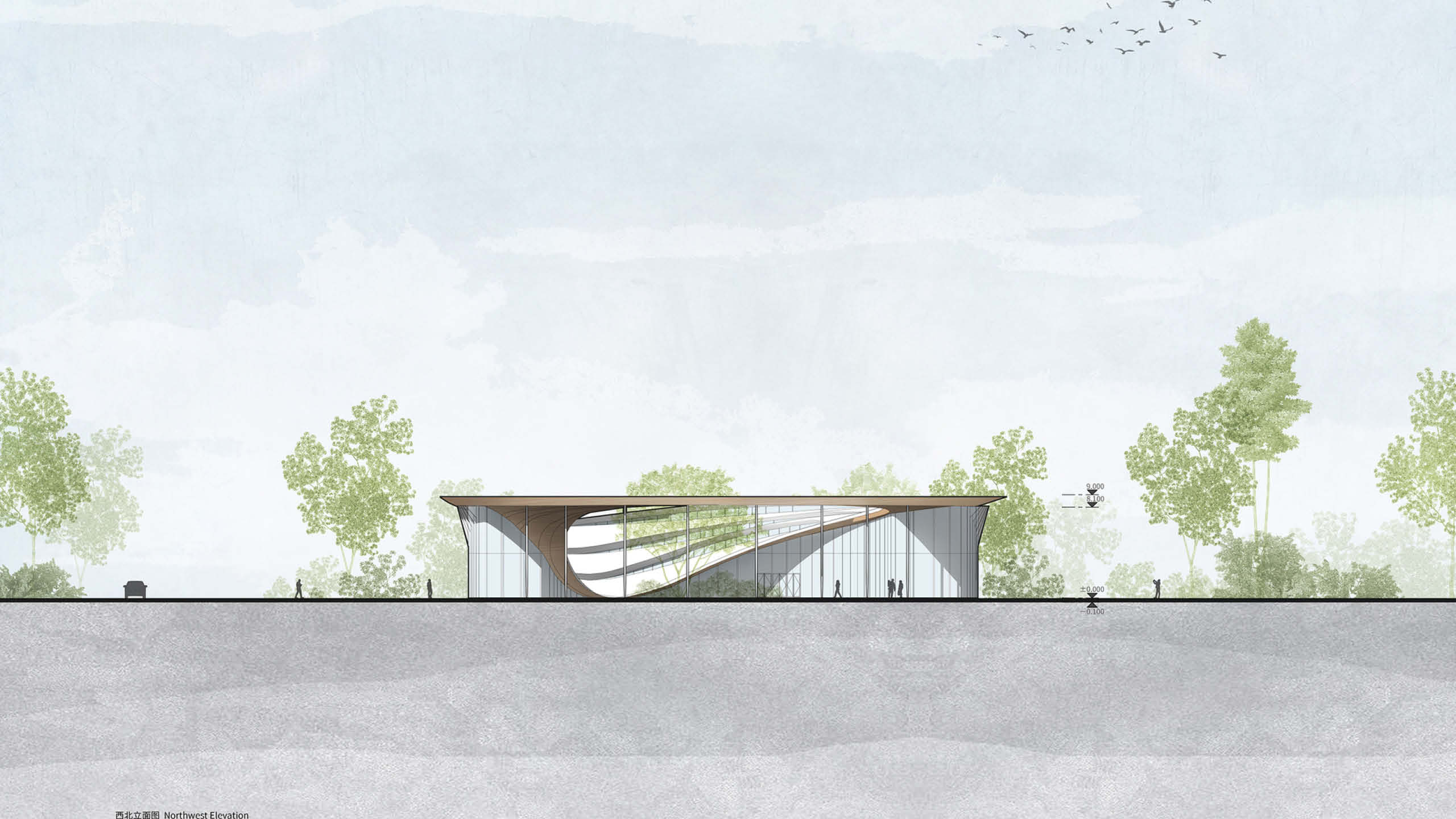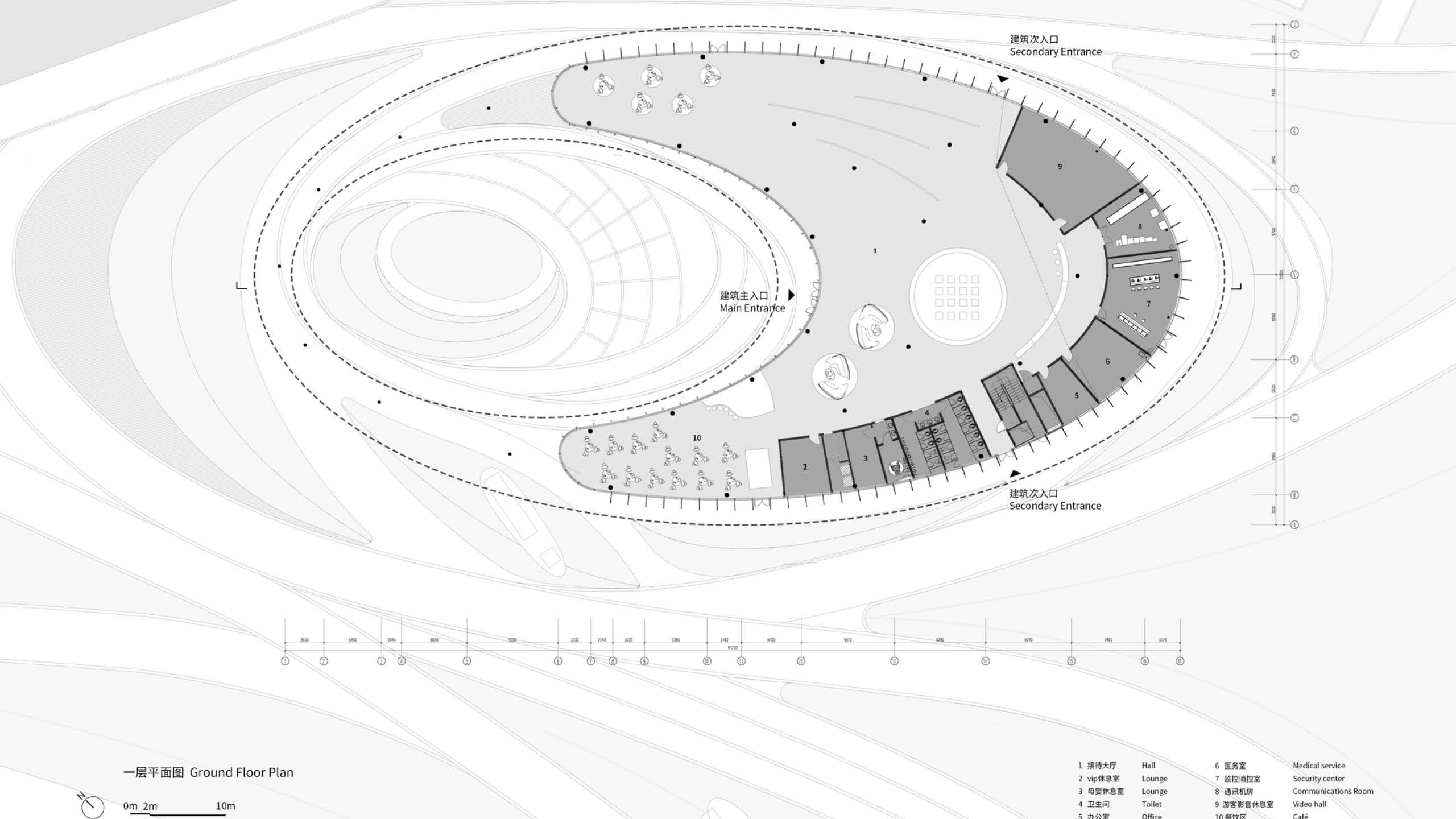
Haikou Xixiu Park Visitor Center by MUDA-Architects Features Unique Play on Traditional Thatched Roof
MUDA-Architects unveiled the Haikou Xixiu Park Visitor Center after three years of design and construction. To the architecture firm, the project is a testament to its commitment to seamlessly integrating indigenous spiritual and cultural values into the local landscape while upholding the principles of environmental stewardship. Nestled amid the verdant vegetation and serenaded by the gentle symphony of nearby waves, the structure stands as an oval pebble plucked from the shore, harmoniously blending traditional wisdom with contemporary design, providing visitors with an extraordinary setting to explore and immerse.
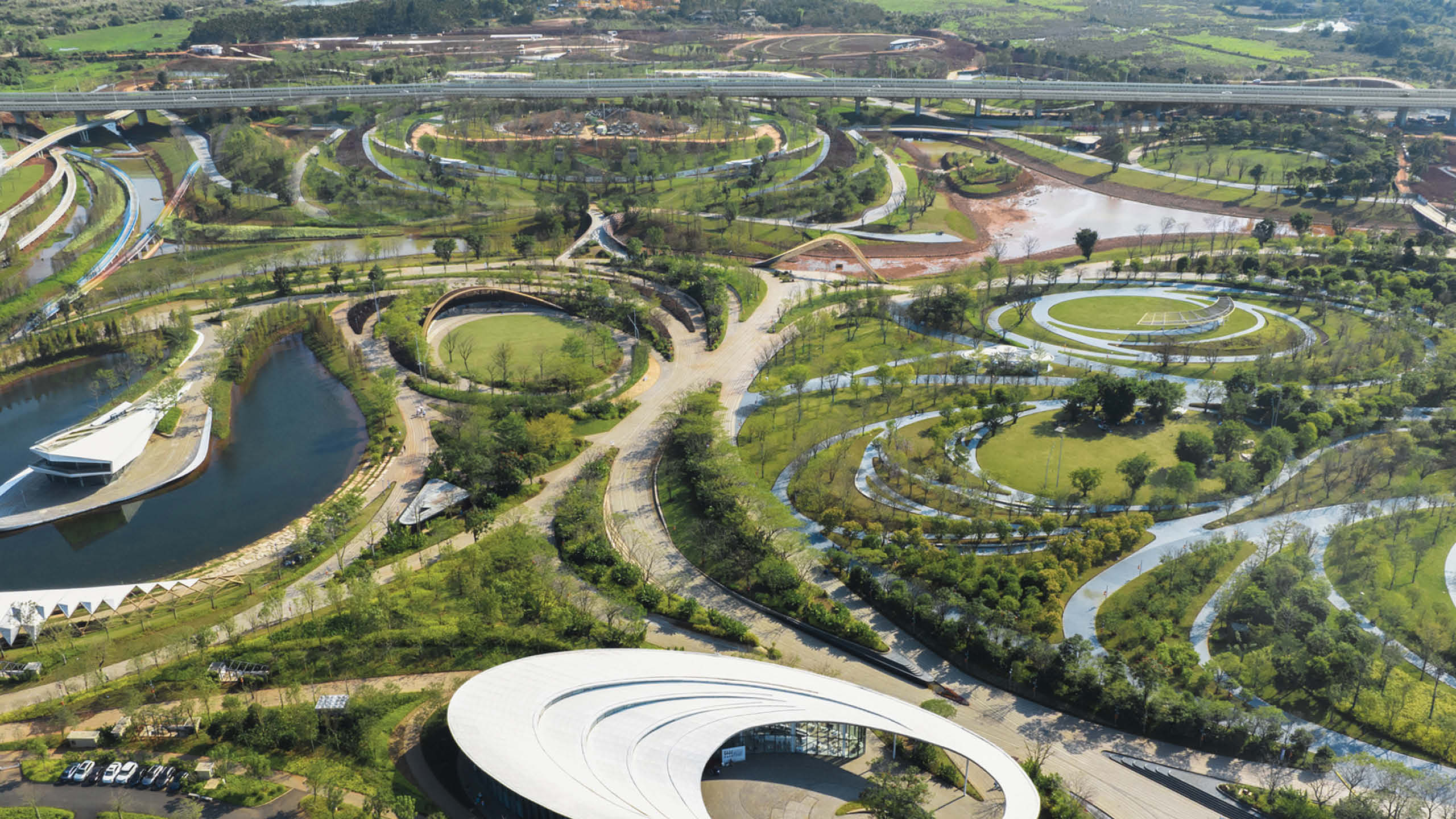


The project is in the southern region of Haikou City, a coastal city in China known for its luxuriant tropical scenery and abundant natural resources. According to the architect, the west coast area has leveraged its parks as exhibition spaces to showcase the distinctive features and rich culture of the locale.
At the entrance of Haikou Xixiu Park, adjacent to the main road and the north underground parking lot, the visitor center assumes the role of a prominent landmark. Its architectural and landscape design respects the existing park layout, ingeniously manipulating curvilinear borders to create an oval structure that seamlessly melds with the site’s contours.

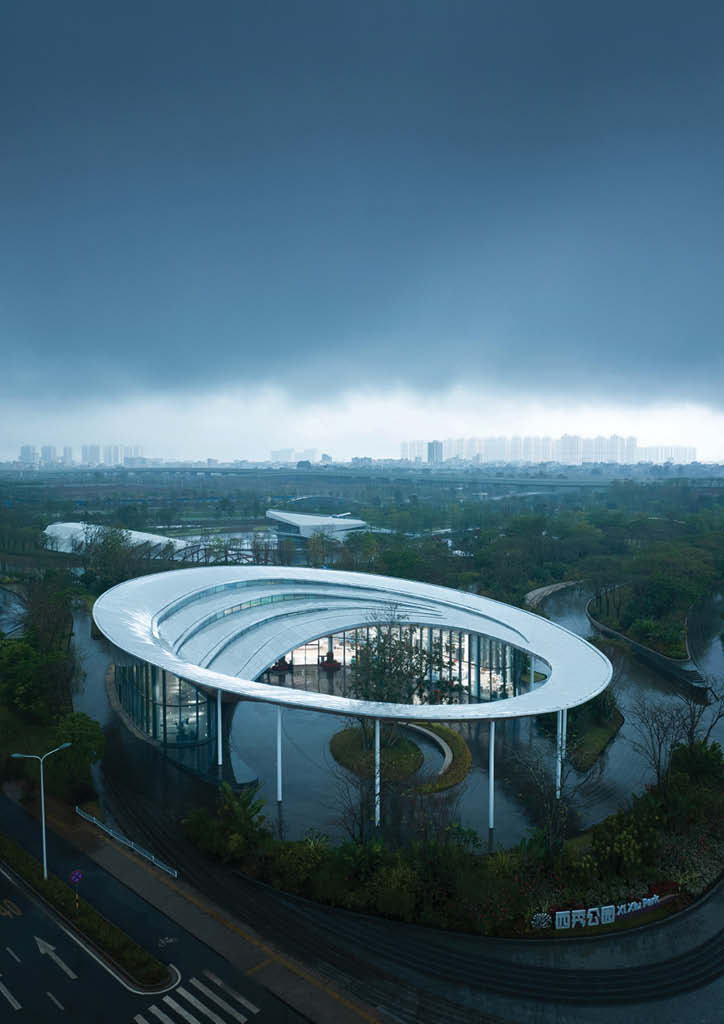
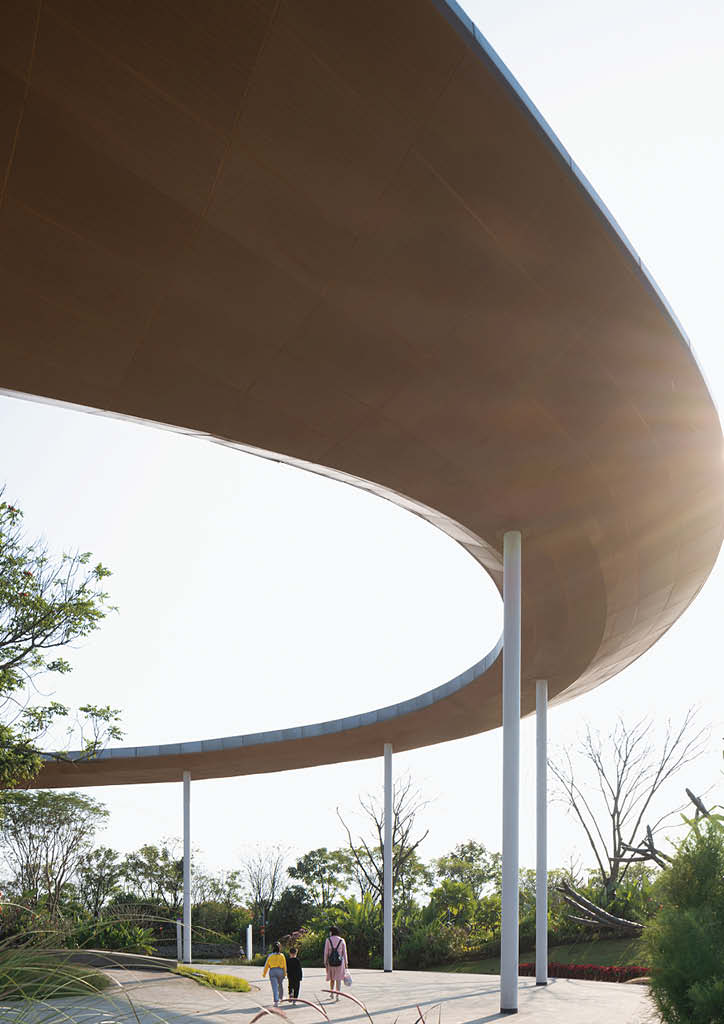
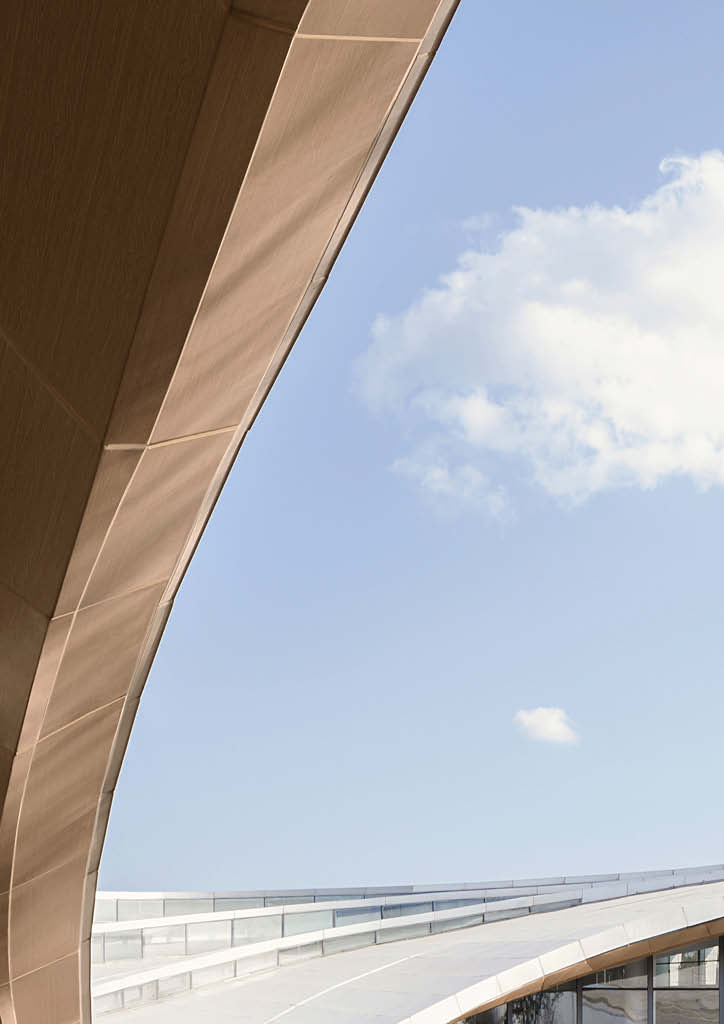


MUDA-Architects draws inspiration from Hainan’s coastal culture, conscientiously considering the local tropical environment. They have devised a fresh roof form, playfully twisting the traditional thatched roofs of local cottages by flipping them upside down. Complying with the basic requirements of shading and sheltering from heavy precipitation and abundant sunlight, the three-dimensional curved reverse-slope roof achieves rainwater harvesting while immersing visitors in a dynamic spatial experience.
The visitor center boasts a protruding roof that gracefully cascades in four levels, tracing the curves reminiscent of water movements, and paying homage to the region’s traditional residential forms. The facade is entirely enveloped in highly transparent ultra-white glass, fostering an open and unobstructed interior space that provides visitors with a 360° panoramic view of the park. From the exterior, the translucent glass facade creates an illusion of the hovering roof gently resting upon the rainforest.
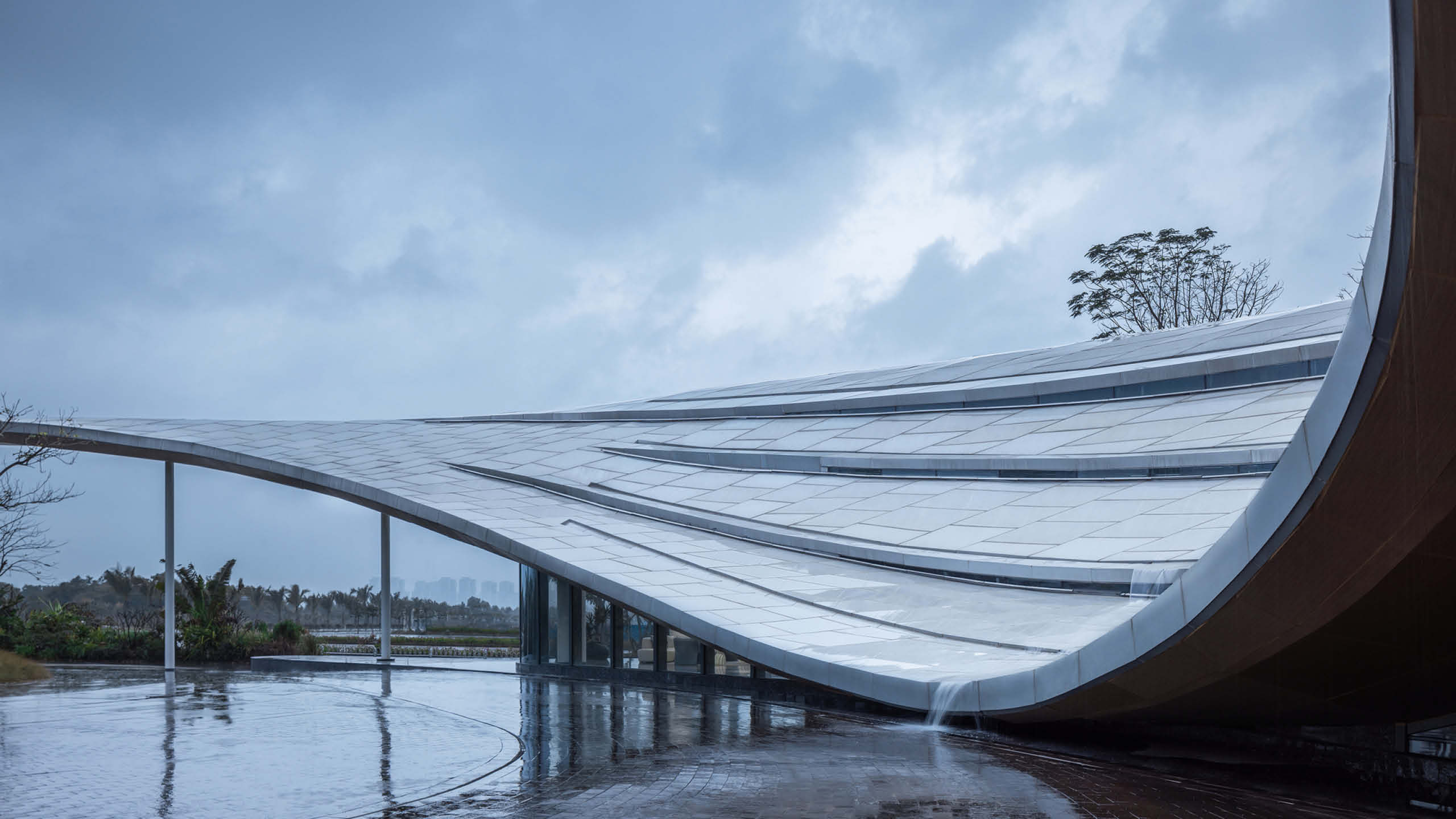

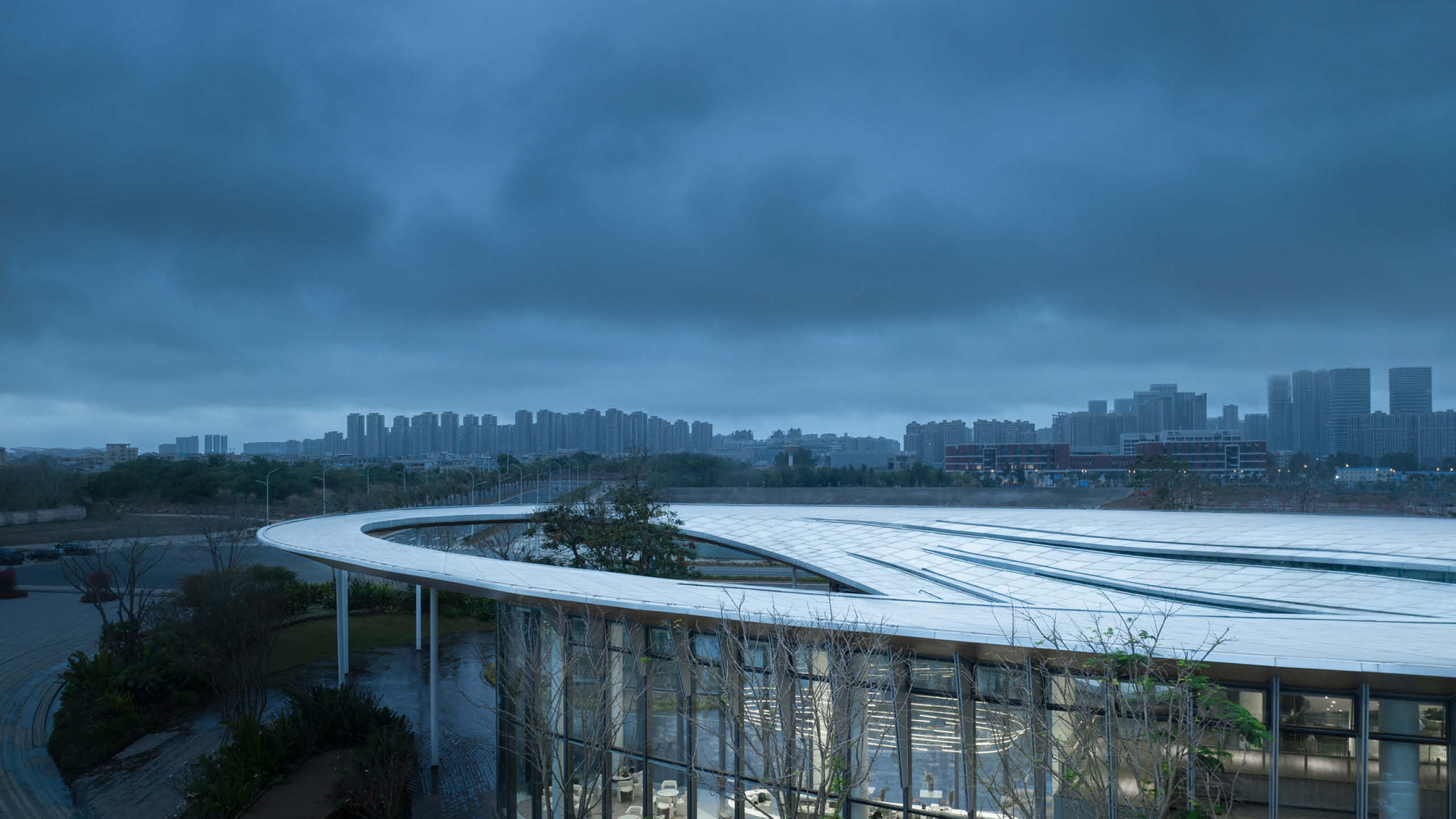


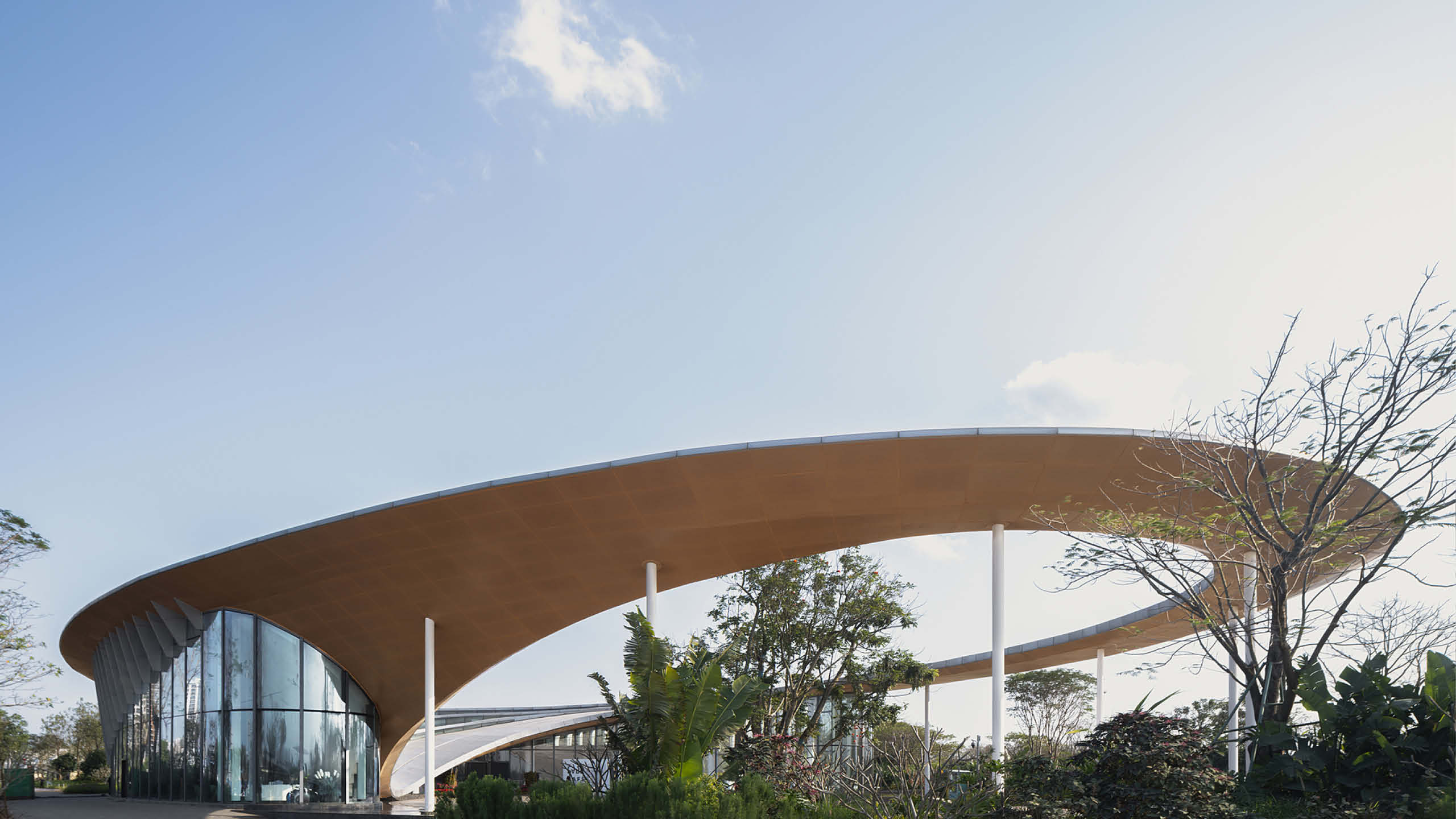

To further enhance the architectural composition, the studio has incorporated perforated aluminum sunshade louvers of varying lengths into the glass curtain wall. These elements generate an undulating rhythmic wave, echoing with the coastal features. While adding visual interest to the facade, these panels and the protruding roof ensure a comfortable temperature within the interior spaces, contributing to minimal energy consumption.
The design of the structure pays homage to the park’s existing layout, transforming the curvilinear edges into an elliptical form that harmonizes with the surrounding context, all the while exuding the characteristics of the city and respecting the natural environment. The inner courtyard creates an expansive and open area that contrasts with the solid architectural spaces, providing visitors with a transitional experience as they approach the center from the park. The exterior facade, adorned with a glistening titanium aluminum roof, ensures the building stands out amid its surroundings, while the inner roof features wood-grained aluminum panels that foster a dialogue with the natural context.
Upon entering through the main entrance, the discernible lines of the roof effortlessly guide the gentle infusion of light, gracefully illuminating the spatial realm within. Echoing the stratified nature of the roof design, a crafted sequence unfolds: a reception hall, a versatile exhibition area, and a café compose the initial tier. Progressing further, the second tier unfolds, revealing service spaces such as restrooms, a nurturing nursery, and a medical center, alongside administrative and surveillance areas. White steel columns traverse the interior and exterior, fulfilling both a structural role and engendering a symphony of rhythmic spatial encounters for discerning visitors.
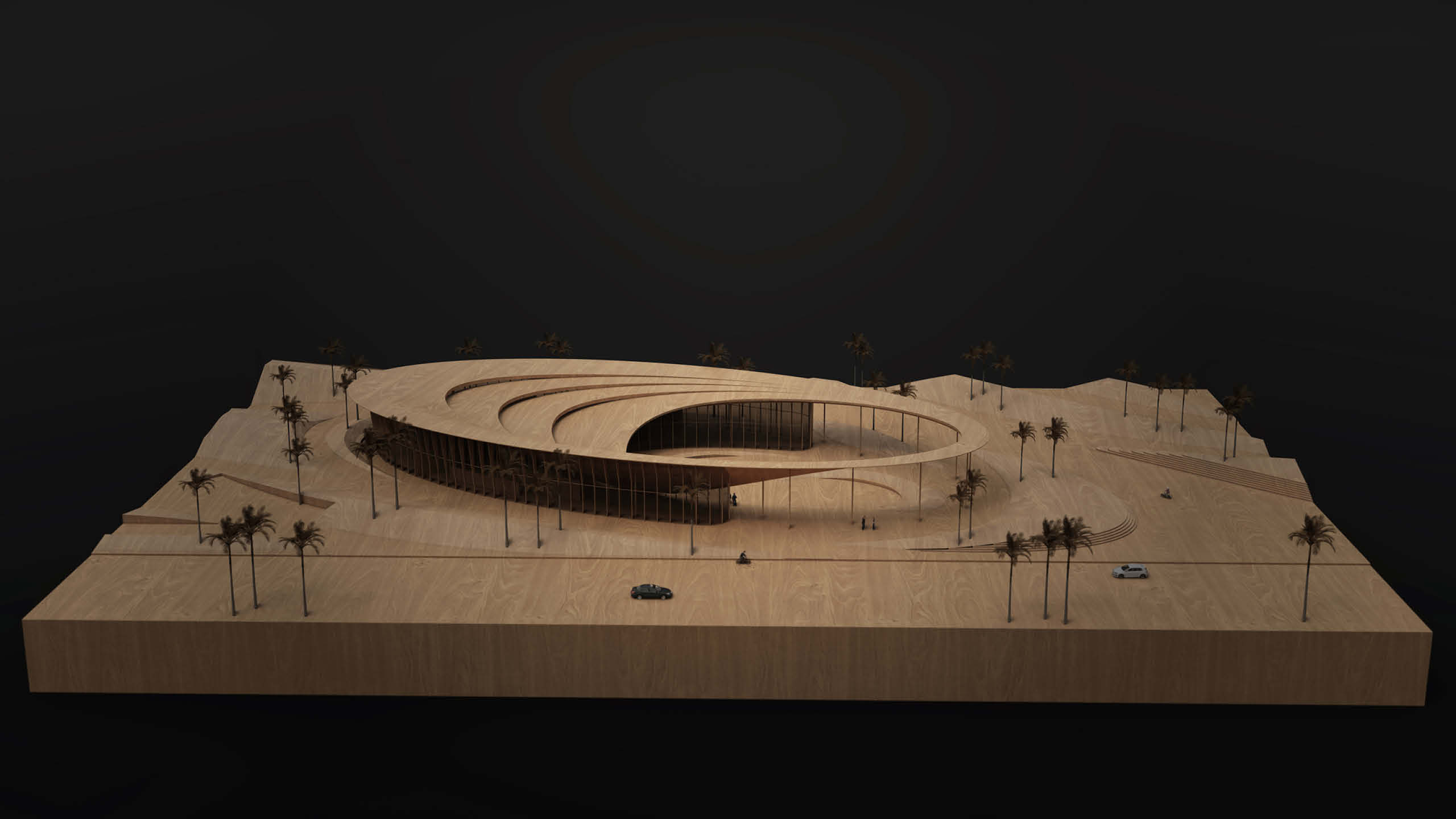
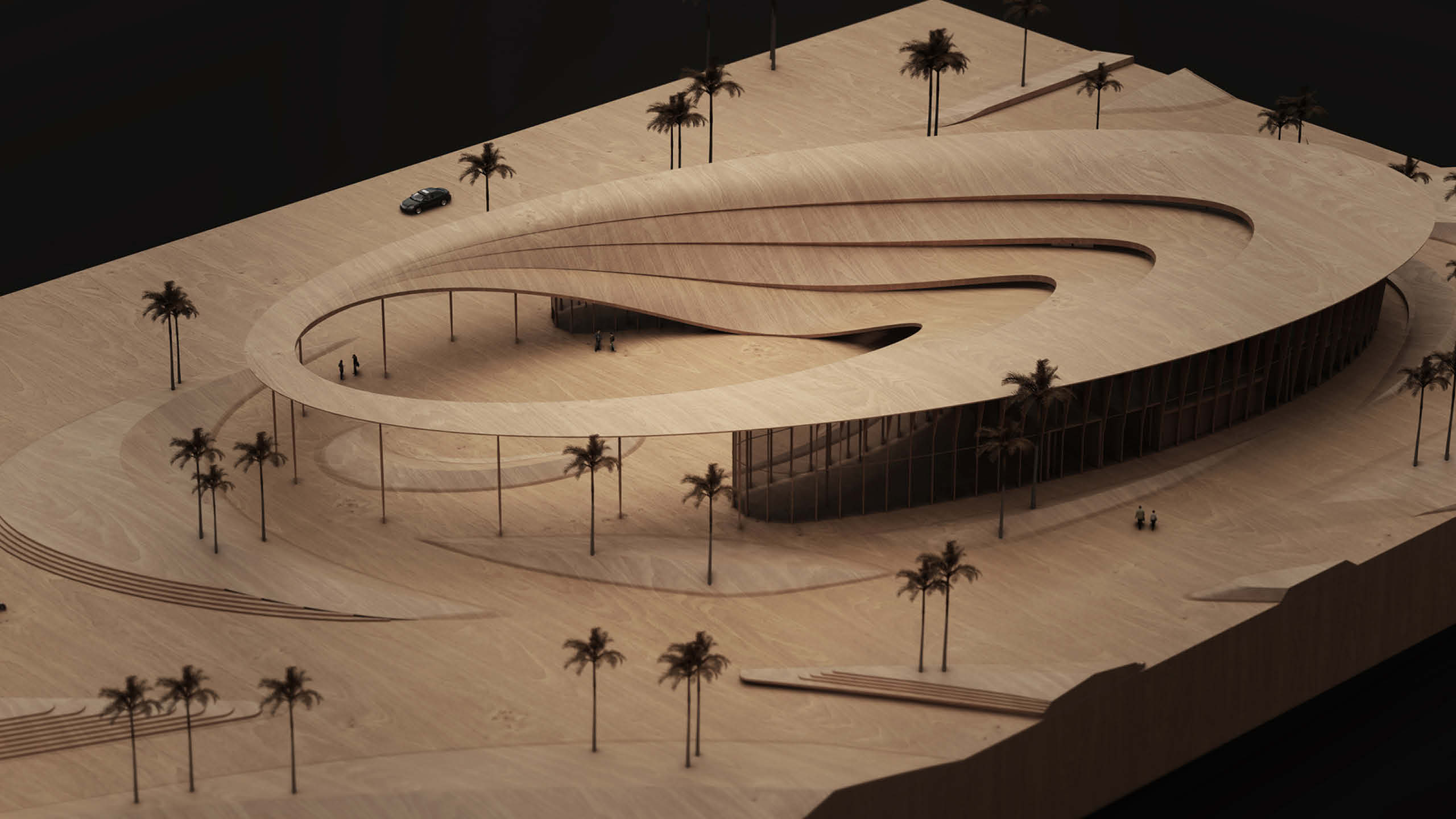
MUDA-Architects remains dedicated to the preservation of nature, continuously exploring innovative techniques, and emphasizing genius loci within a contemporary approach. With a thematic focus on fostering a connection with the natural ecology, their design embodies the site’s characteristics, merging the architectural form with the park and its surroundings. The convergence of traditional wisdom and innovation, along with the interplay between void and solid architectural spaces, collectively birth a transformative and experiential visitor center.
Related Read: Meandering Valleys: Zaha Hadid Architects’ Inspiration for Jinghe New City Culture and Art Centre
Photography by Archi-translator, Arch-Exist


